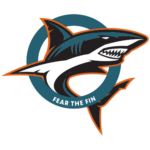Two months off? Or is the 2019-20 NHL season over?
It’s impossible to say right now, as COVID-19 has just begun to ravage the United States.
The NBA announced last Wednesday, very optimistically, “at least” a 30-day hiatus. It will probably be longer, as the NHL announced this morning their hopes to start training approximately 45 days into the CDC’s 60-day recommendation:
Update from the NHL regarding player activity and movement during season pause: pic.twitter.com/yeFjII7W49
— NHL Public Relations (@PR_NHL) March 16, 2020
From that springboard, I spoke with a couple recently-retired NHL players about what to expect from player conditioning, if and when the league resumes play. Like so many things in regards to the coronavirus, a pause of this length in the middle of the season is unprecedented in NHL history.
It turns out, however, that for a top athlete in the middle of a grueling season, one month off isn’t necessarily a bad thing.
“Everyone plays with aches and pains, no one’s ever really 100 percent. Guys play a little fatigued all the time,” the retired player said. “This might be a good thing for the players’ bodies. They rest up; they heal everything.”
For the players in limbo though, this hypothetical month off probably won’t include a lot of skating. Pierre LeBrun outlined the self-quarantine that they’ll be expected to follow:
NHL/NHLPA signed off on memo around 5 p.m. ET, guidelines:
1) Players for now asked to self-quarantine in their home NHL cities;
2) At some point TBD, players may skate at NHL facility in small groups;
3) Near the end, plans for mini camp before (if) season resumes.— Pierre LeBrun (@PierreVLeBrun) March 13, 2020
The retired player took this into account: “I took a month off once because of injury. I didn’t skate for a whole month. I wasn’t doing much, maybe going for a few runs. But not everyday. I wouldn’t say I was working out at all.
“The thing is, you don’t really lose it. You don’t lose your VO2 capacity that quickly. I’ve heard it’s about three weeks that VO2 stays at the same level and then it drops off.”
He talked about his return to the ice: “Almost a month to the day of my injury, I went back on the ice three or four or five times, maybe? The first few skates? I was awful. But you bag skate yourself, you flush the system, you recover. Got right back into games and felt great.
“You’re going to be rusty, of course. You’re not going to be handling the puck as well, that requires some feel. But that comes back quick too.
“But overall, for the players’ bodies, getting a month off before playoffs — that’ll help.”
He added, laughing: “Provided you’re not destroying your body in your time off, drinking everyday.”
But more than a one-month hiatus, especially without regular ice-time, will begin to challenge the fitness of even the best-conditioned athletes.
“Normally, as soon as the season is over, most guys take a good month or six weeks to let their body heal. So it’s a summer break if you’re taking that much time off,” another retired player pointed out. “For a lot of these guys, you just can’t jump right in and be in playoff mode. It’s not an easy ask for these players to pick up right where they left off.”
Too much, too soon — like the one-week training camps before the 1994-95 and 2012-13 lockout-shortened campaigns — is an invitation for a particular type of injury.
“That’s how people get hurt, if they’re not in the shape they were in and you’re playing 27 minutes. Groin is the first thing that comes to mind, in terms of a likely injury, any time you have along time off. Just because you’re using some muscles that you rely on a lot,” he said. “I always thought during pre-season and training camp, it was groins that people would have issues with. In my own experience, it was always a groin that would kind of feel like it was going in a little bit.”
He suggested a two-week “training camp” to get ready for, in this case, the playoffs.
Of course, it’s all academic right now. But one thing is certain: We’ll take sloppy hockey in a couple months over no hockey at all.
Possible COVID-19 Exposure
On Thursday, Sharks Sports & Entertainment disclosed that a part-time SAP Center employee had tested positive for COVID-19. This employee last worked at SAP Center at the March 3 San Jose Sharks game.
There aren’t more details in this release, I guess, for legal and privacy reasons.
But more importantly, if you were at this game like I was, I hope you’re doing well. Just as a reminder, we’re now at 13 days since possible exposure. For most, symptoms appear within five days, though up to 14 days is the recommended active monitoring period for symptoms.
As a reminder, the Centers of Disease Control and Prevention (CDC) has put out this list of recommendations for personal protection during this time:
- Avoid close contact with people who are sick.
- Avoid touching your eyes, nose and mouth.
- Cover your cough or sneeze with a tissue, then throw the tissue in the trash.
- Clean and disinfect frequently touched objects and surfaces using a regular household cleaning spray or wipe./
For more information on the coronavirus, visit cdc.gov/coronavirus.

 As many of you know, Fear the Fin is an independent site run by Sharks fans for Sharks fans. Help keep Fear the Fin independent by contributing to our
As many of you know, Fear the Fin is an independent site run by Sharks fans for Sharks fans. Help keep Fear the Fin independent by contributing to our